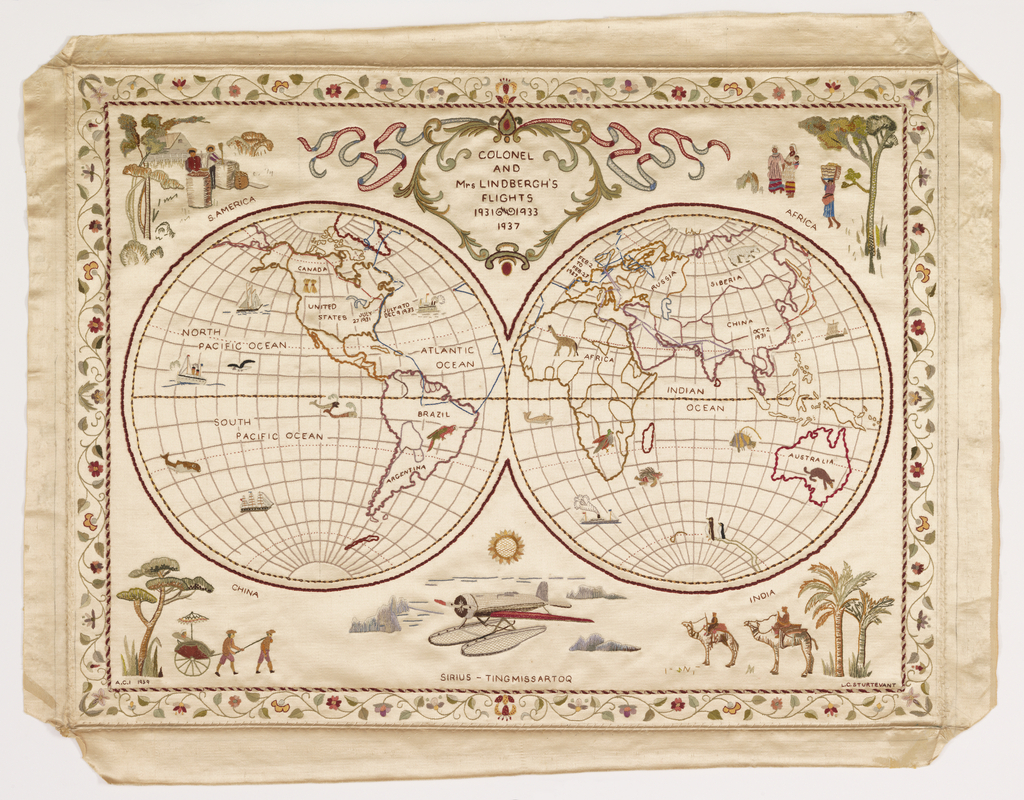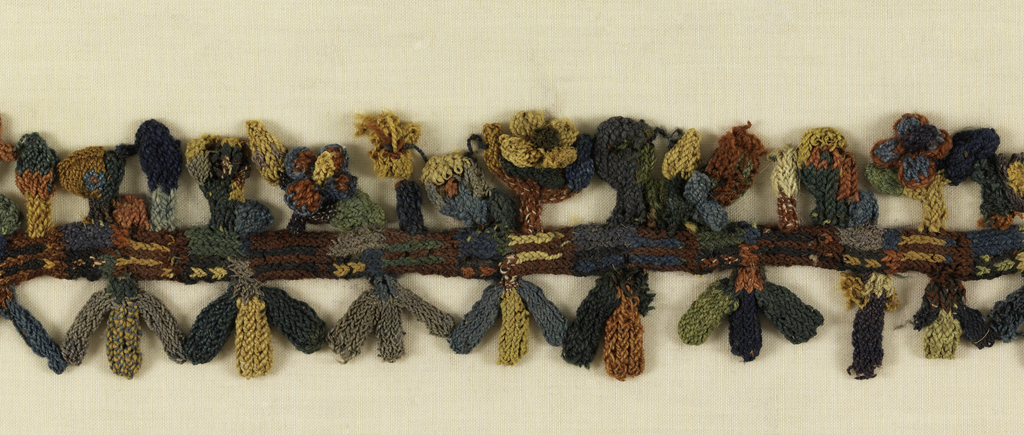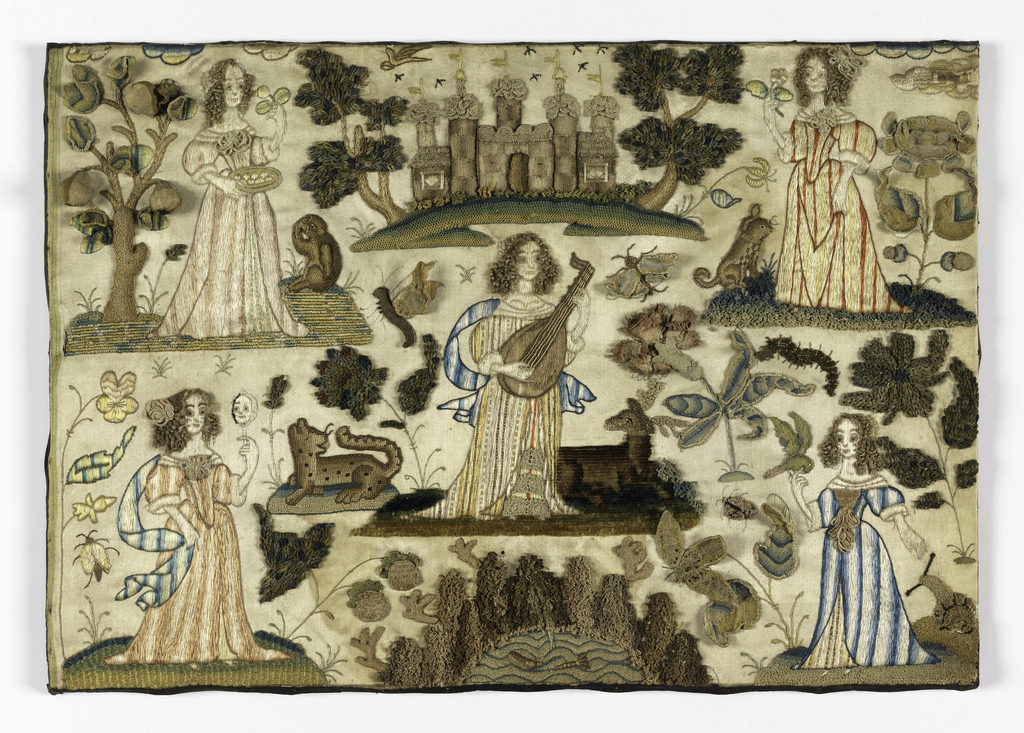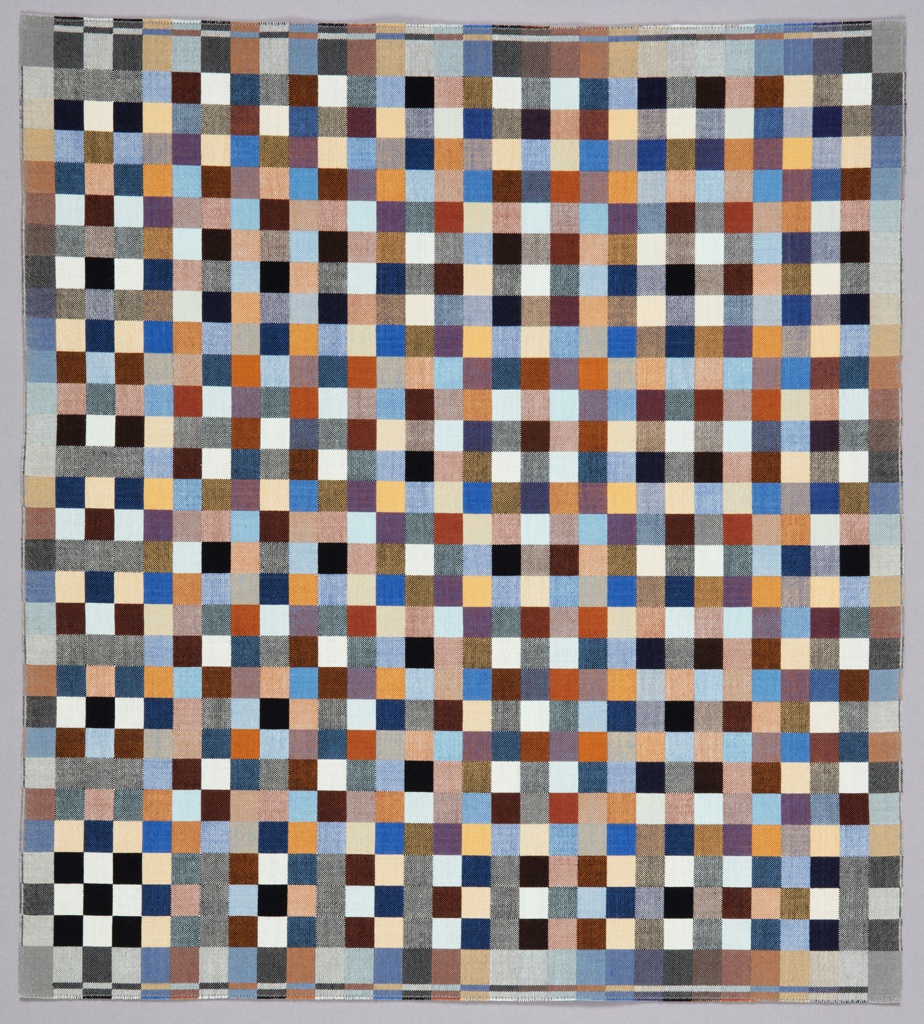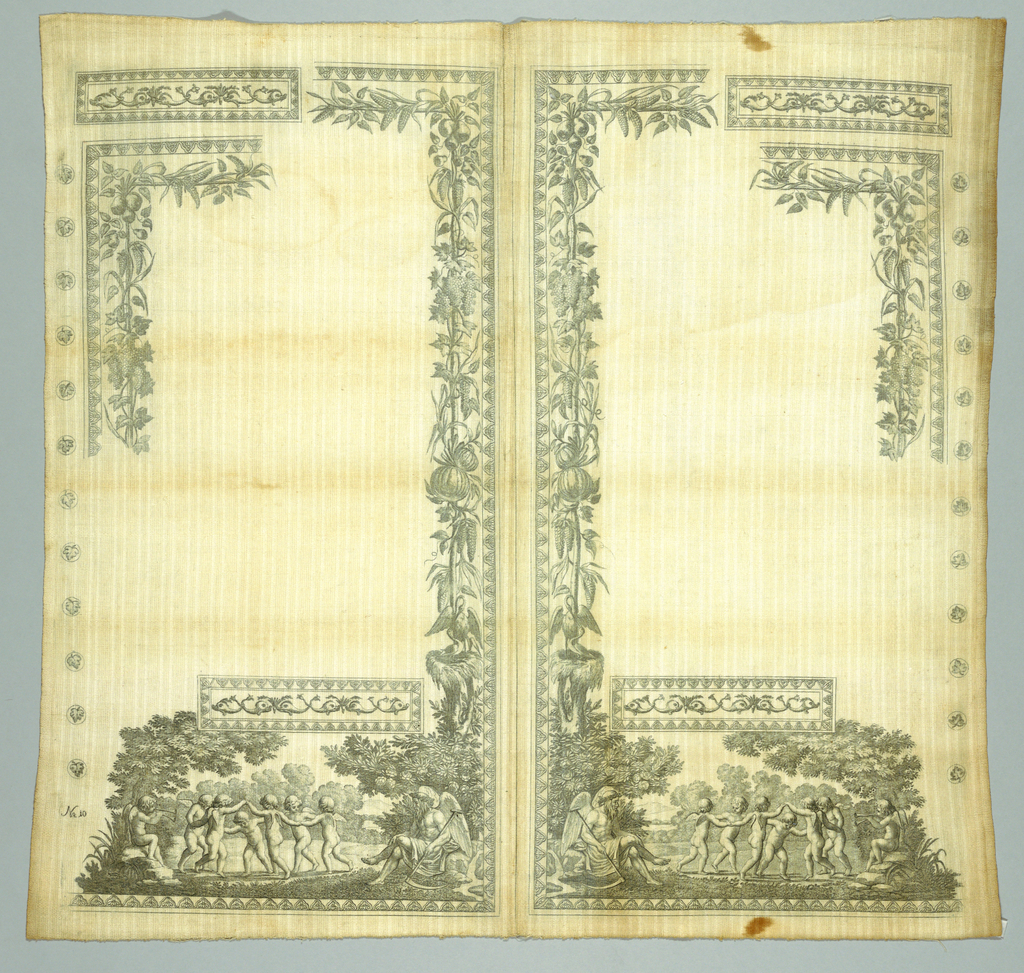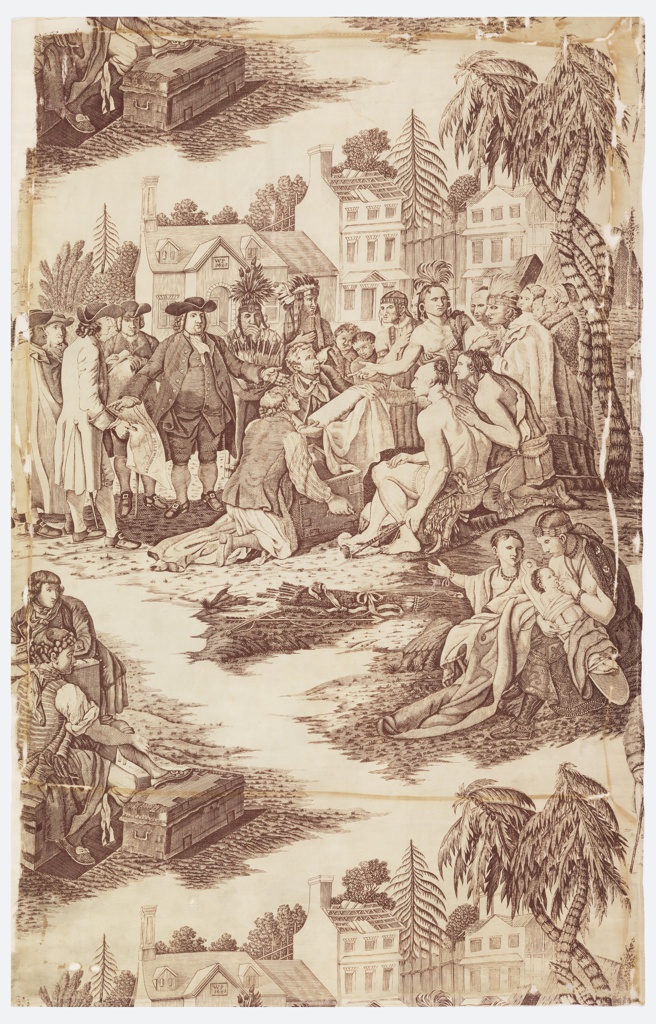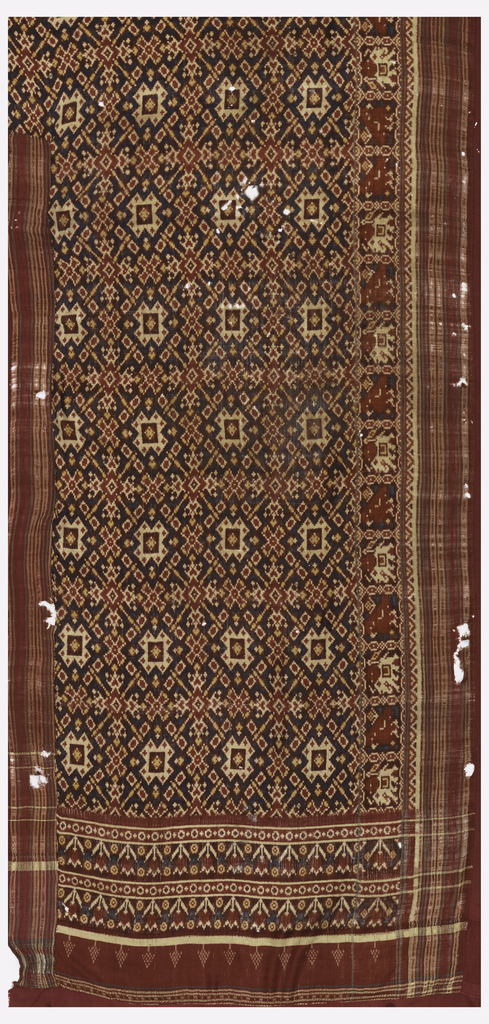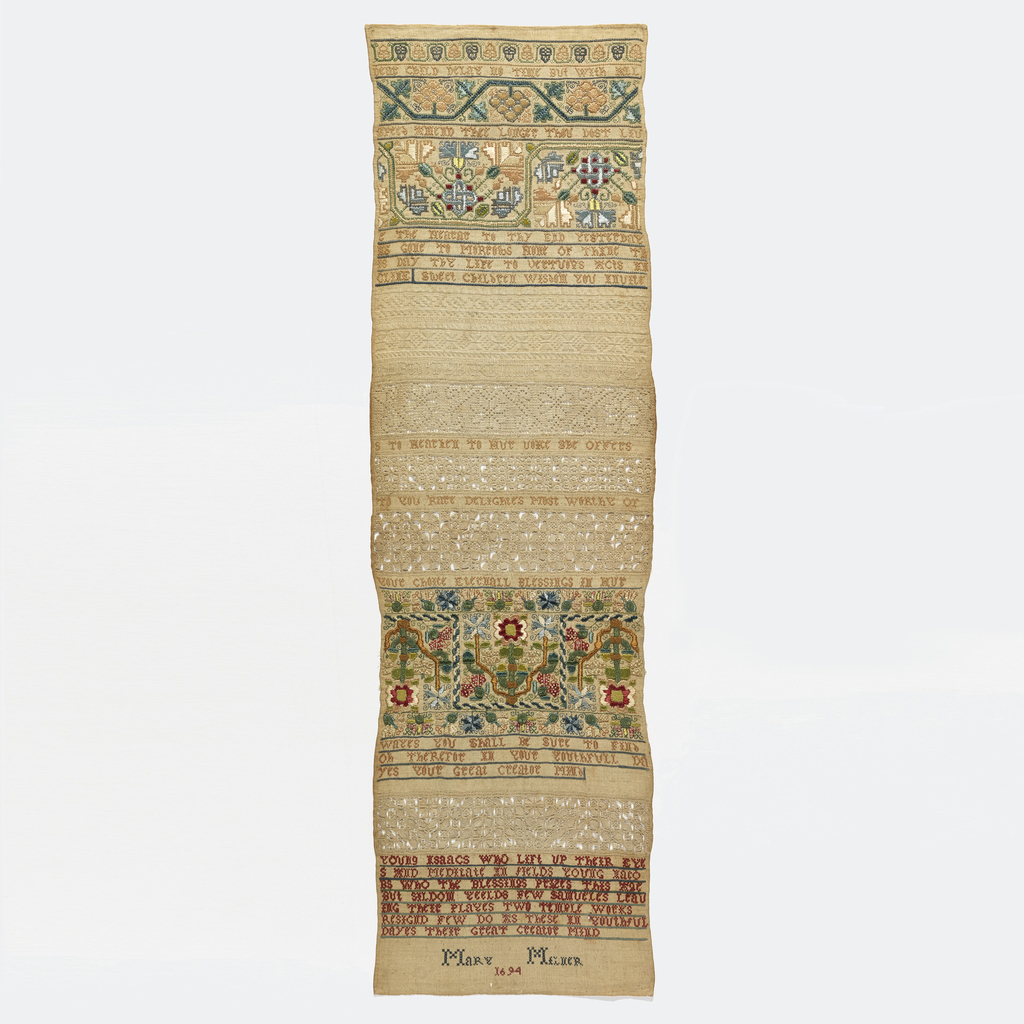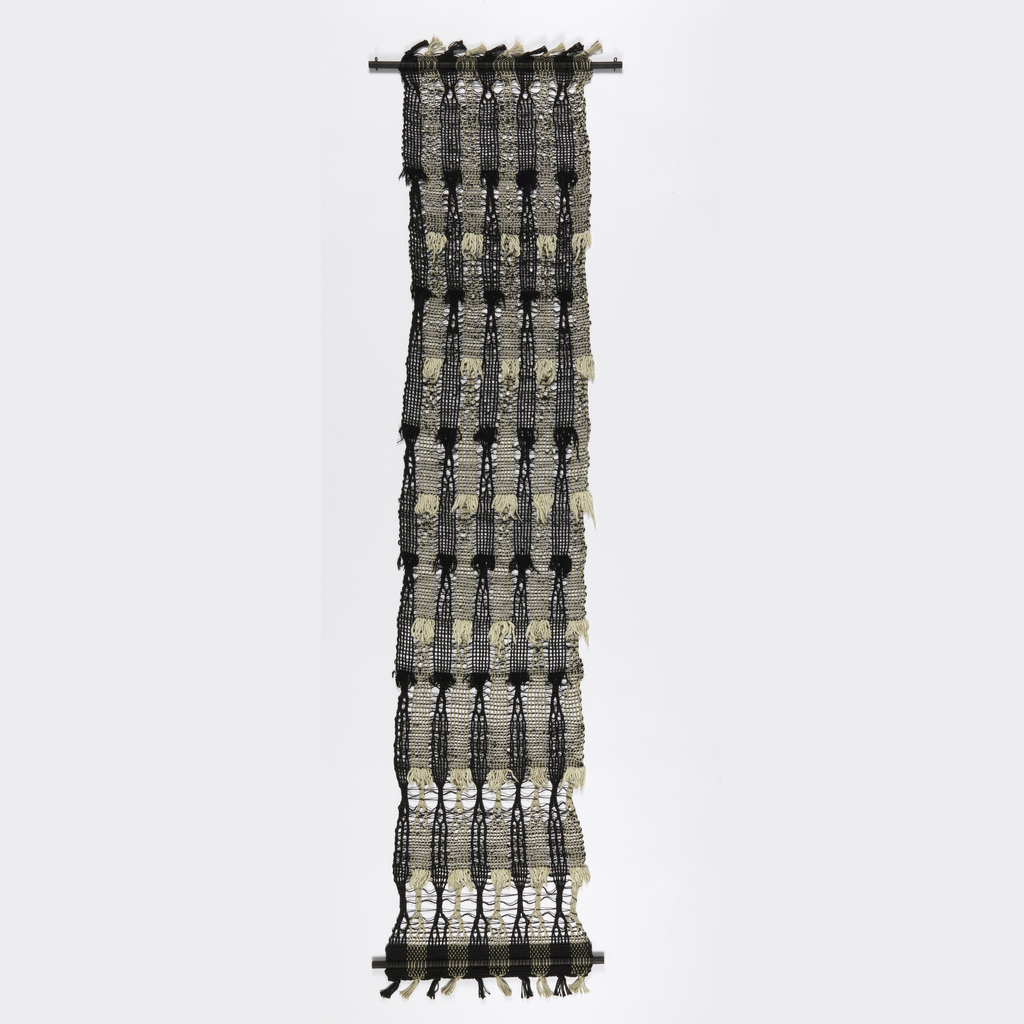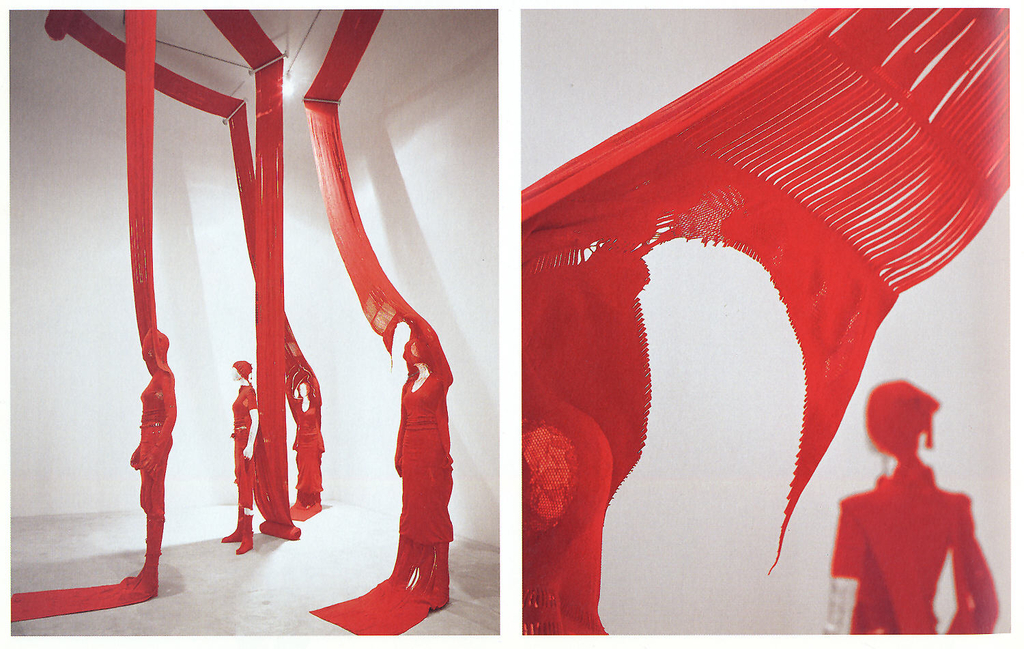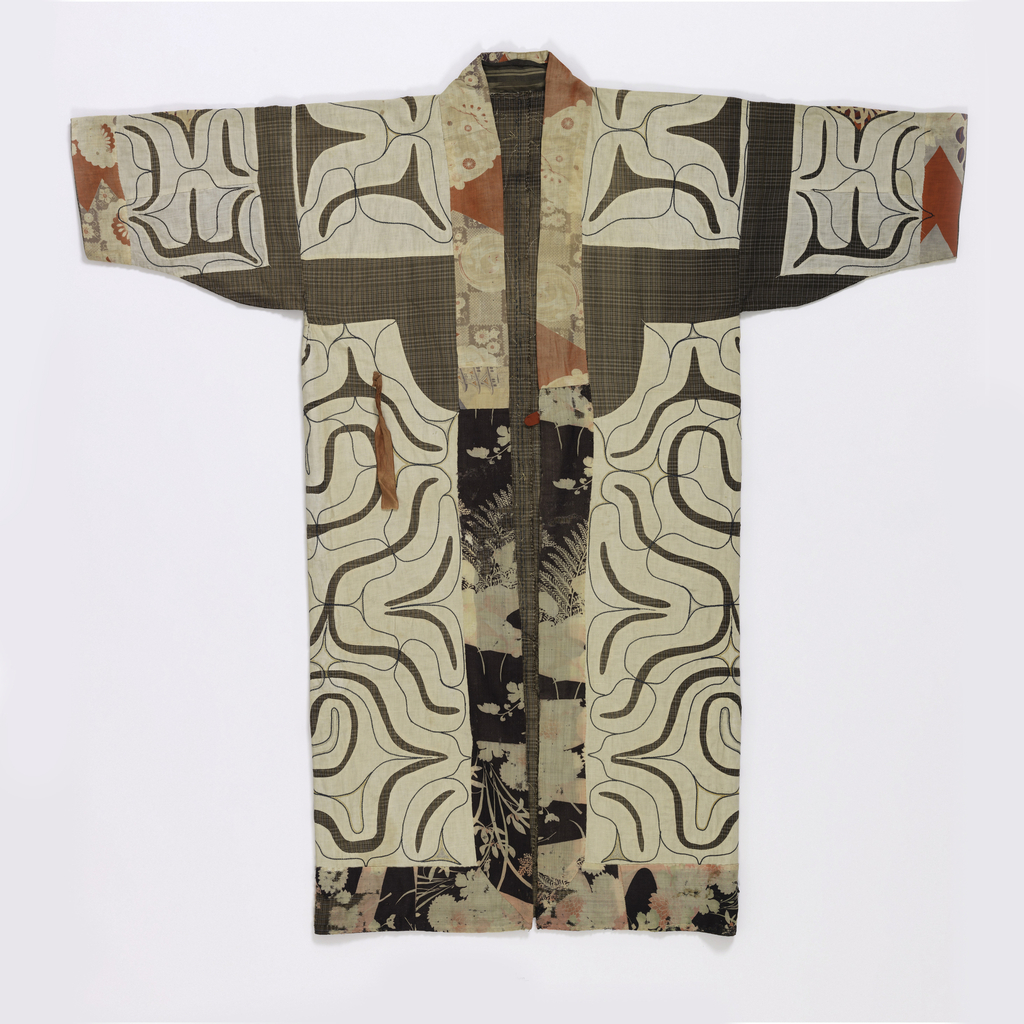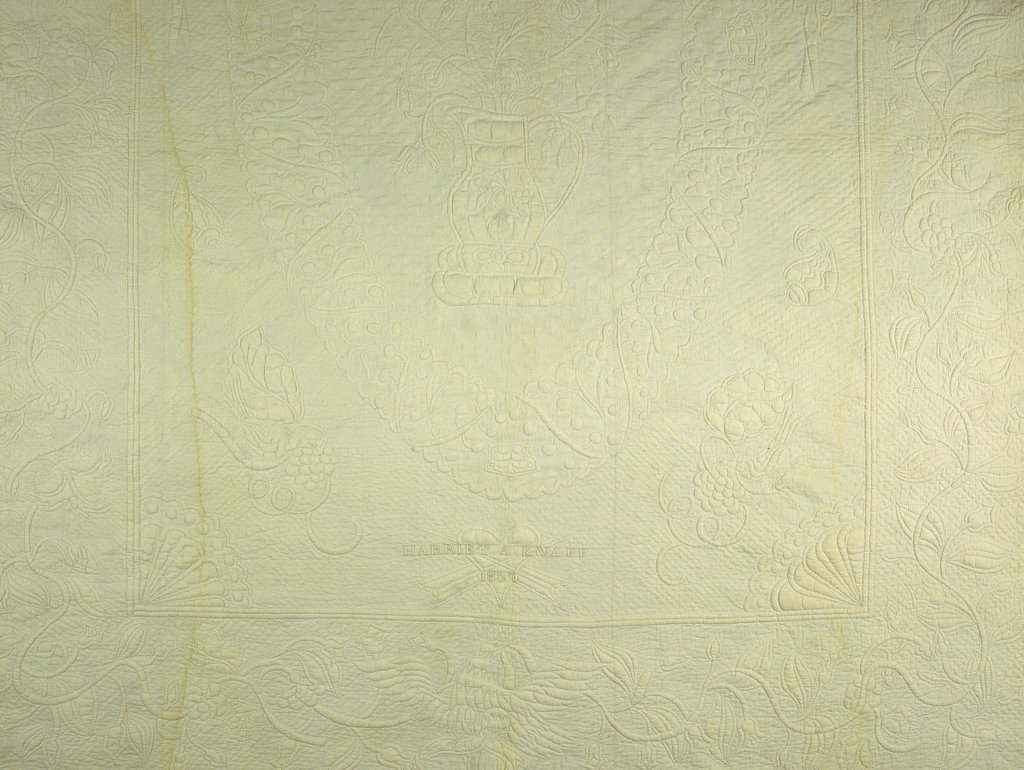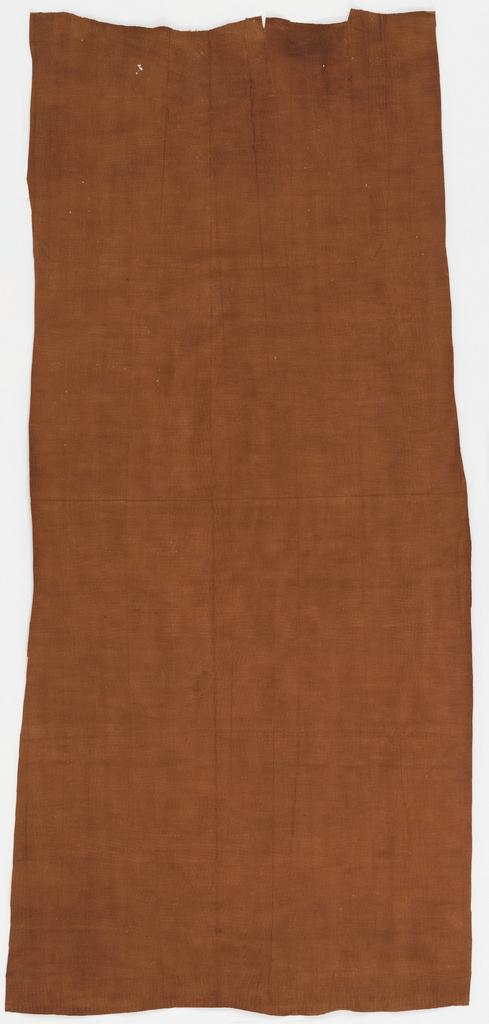Author: Madelyn Shaw This silk embroidery, titled “Colonel and Mrs. Lindbergh’s Flights – 1931 – 1933 – 1937,” is an extraordinary take on the tradition of the map sampler. Embroidered lines in blue, gray, and red trace the routes that Charles and Anne Morrow Lindbergh took on a few of their 1930s flights: in 1931,...
During the period from around 100 B.C. to 400 A.D., Nasca needleworkers from the South Coast of Peru mastered the complex art of three-dimensional cross-looping. A number of colorful and complicated border fragments like this one have been preserved. The few garments that remain intact show that they were used as the outer edging attached...
Author: Katherine Diuguid The wealth of needlework techniques on display in 17th century English raised-work embroideries is a reminder that these pictures functioned as samplers, in which amateur embroiderers would test out different techniques as they progressed in their needlework skills. Whether depicting Biblical or mythological characters, female figures rendered in contemporary dress often enjoyed...
American weaver Richard Landis’s works are characterized by complex design systems that echo the logic of their construction with a limited vocabulary of materials, texture, geometric forms, and colors. From his earliest days at the loom, Landis decided he would work only in plain weave and within the opportunities offered by handwoven, loom-controlled design. He...
Author: Virginia Pollock While this textile might seem unrecognizable to modern eyes, to consumers in eighteenth-century France this textile was an object of fashionable and economic significance. These uncut waistcoat fronts display the layout of a pattern, adorned with copperplate printed motifs of vegetal imagery, intertwined dolphins, and a wooded scene at the bottom with...
Author: Virginia Pollock The founding of Pennsylvania and the formation of William Penn’s “greene country towne” of Philadelphia is immortalized in this textile, intended for use as a furnishing fabric. Whereas today Penn’s dealings might be seen as part of a larger narrative of harmful and exploitative colonization, the printed images seek to convey Penn...
In recognition of National Hispanic Heritage Month (September 15-October 15, 2019), this week’s Object Of The Day posts celebrate Latinx design and designers’ works in the collection. This rather ordinary looking band is actually extraordinary. Made in Mexico during the Spanish colonial period (likely mid-15th- early 16th c.) it is composed with a Spanish aesthetic,...
Author: Wendy Weiss In celebration of the fourth annual New York Textile Month, members of the Textile Society of America will author Object of the Day for the month of September. A non-profit professional organization of scholars, educators, and artists in the field of textiles, TSA provides an international forum for the exchange and dissemination...
Author: Sara Clugage In celebration of the fourth annual New York Textile Month, members of the Textile Society of America will author Object of the Day for the month of September. A non-profit professional organization of scholars, educators, and artists in the field of textiles, TSA provides an international forum for the exchange and dissemination...
Author: Dr. Lynne Anderson In celebration of the fourth annual New York Textile Month, members of the Textile Society of America will author Object of the Day for the month of September. A non-profit professional organization of scholars, educators, and artists in the field of textiles, TSA provides an international forum for the exchange and...
Author: Robin Haller In celebration of the fourth annual New York Textile Month, members of the Textile Society of America will author Object of the Day for the month of September. A non-profit professional organization of scholars, educators, and artists in the field of textiles, TSA provides an international forum for the exchange and dissemination...
Author: Gabe Duggan In celebration of the fourth annual New York Textile Month, members of the Textile Society of America will author Object of the Day for the month of September. A non-profit professional organization of scholars, educators, and artists in the field of textiles, TSA provides an international forum for the exchange and dissemination...
Author: Ayaka Sano In celebration of the fourth annual New York Textile Month, members of the Textile Society of America will author Object of the Day for the month of September. A non-profit professional organization of scholars, educators, and artists in the field of textiles, TSA provides an international forum for the exchange and dissemination...
Author: Laurel Horton In celebration of the fourth annual New York Textile Month, members of the Textile Society of America will author Object of the Day for the month of September. A non-profit professional organization of scholars, educators, and artists in the field of textiles, TSA provides an international forum for the exchange and dissemination...
Author: Lesli Robertson In celebration of the fourth annual New York Textile Month, members of the Textile Society of America will author Object of the Day for the month of September. A non-profit professional organization of scholars, educators, and artists in the field of textiles, TSA provides an international forum for the exchange and dissemination...
